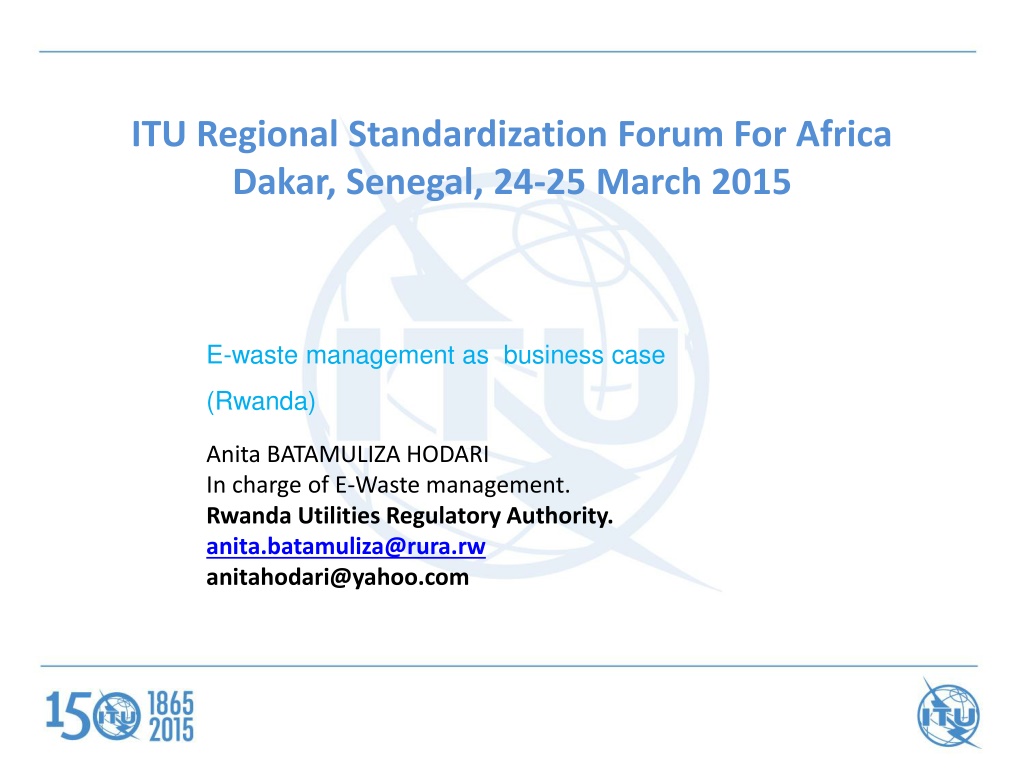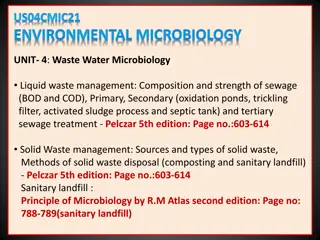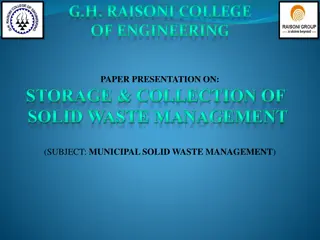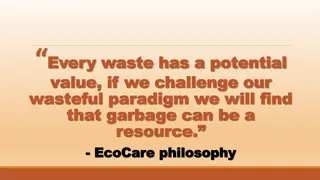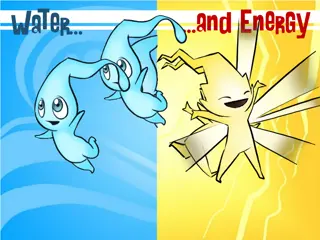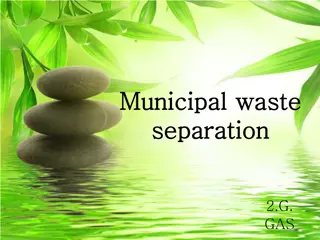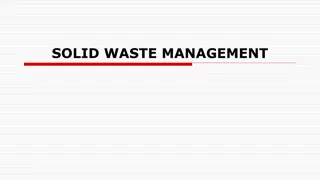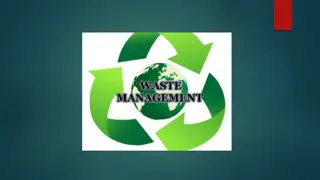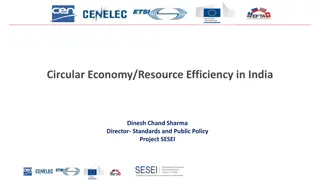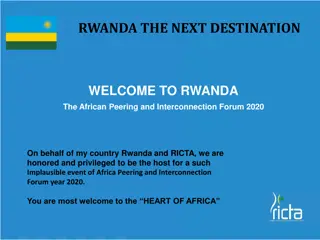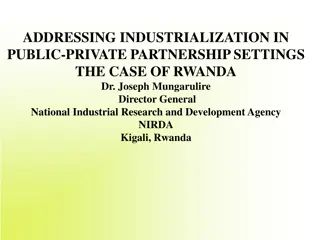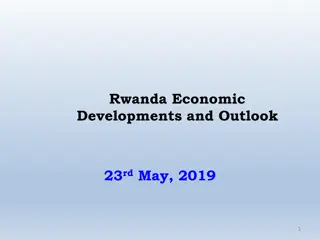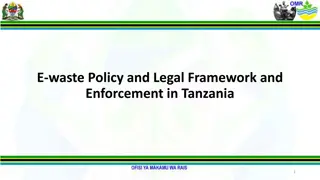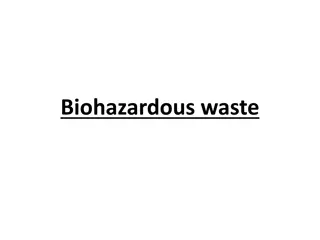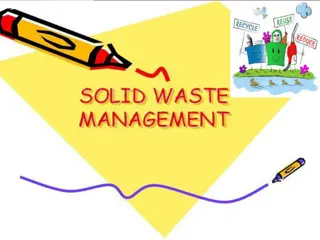E-Waste Management in Rwanda: A Business Case Overview
Explore the E-waste management scenario in Rwanda through a presentation by Anita BATAMULIZA HODARI at the ITU Regional Standardization Forum for Africa in 2015. The outline covers types of E-waste in Rwanda, stakeholders involved, importation and usage data of EEE devices, material flows, management approaches, potential revenues, and key conclusions regarding E-waste in the country.
Download Presentation

Please find below an Image/Link to download the presentation.
The content on the website is provided AS IS for your information and personal use only. It may not be sold, licensed, or shared on other websites without obtaining consent from the author. Download presentation by click this link. If you encounter any issues during the download, it is possible that the publisher has removed the file from their server.
E N D
Presentation Transcript
ITU Regional Standardization Forum For Africa Dakar, Senegal, 24-25 March 2015 E-waste management as business case (Rwanda) Anita BATAMULIZA HODARI In charge of E-Waste management. Rwanda Utilities Regulatory Authority. anita.batamuliza@rura.rw anitahodari@yahoo.com
PRESENTATION OUTLINE 1 Main E-waste Types Rwanda 2 Potential Stakeholders 3 Importation and Usage of EEE in Rwanda E-waste material flows and future trends of E-waste in Rwanda Approach to E-waste management and Potential revenues from selling E-waste components 4 5 6 Conclusion
POTENTIAL E-WASTE STAKEHOLDERS IN RWANDA Regulatory Authority RURA REMA EEE bulk users Districts Individuals National governments Banks Schools (including schools with the One- laptop-per-child program and TVET schools) NGOs Development partners Big companies ( MTN, TIGO, AIRTEL, etc) Universities EEE handlers Producers& Distributors EEE retail shops Auto shops/garages EEE recycle shops/facilities Waste collectors EEE repairs ( informal) DELL SAMSUNG NOKIA HP SONY TECHNO KONKA ACER COMPUTER POINT Potential entities for E-waste recycling Metal buyer Plastic buyer
IMPORTATION OF EEE IN RWANDA 2010 (kg) 2011 (kg) 2012 (kg) 2013 (kg) 2014 (kg) PCs (both laptops and desktops) 358,186.00 227,351.00 410,629.42 295,975.62 261,063.74 Mobile phones 0.00 168,015.00 318,231.60 0.00 963,922.86 Televisions 457,710.00 695,216.00 480,978.25 339,269.66 205,297.75 Total 5,879,947.00 5,997,561.00 9,725,161.20 6,758,415.08 7,408,713.10
EEE USAGE IN RWANDA ( CENSUS DATA) Annual growth rate of 5.95%
APPROACH TO E-WASTE MANAGEMENT IN RWANDA Policy, legal and regulatory Framework for E-waste management in Rwanda ( Draft Policy, Draft Law , Draft regulations, Draft Five Year Strategy, Draft Technical guidelines) 3. Non Hazardous Outputs Local/ regional treatment as far as possible 2. Dismantling Facility 2. Collection 4 provincial collection centres 4. Hazardous Outputs International integrated smelter Export to Europe or Asia
E- WASTE POLICY, LAW AND REGULATIONS Obligation to return Consumer return it to a retailer, manufacturer / importer or to a collection point Registration in the regulatory Authority Be grouped into PRO association under ICT chamber Finance and organise collection and treatment of E-waste Obligation to organise and Finance collection and treatment systems Retailer/ Manufacturer/ Importer Obligation to dispose of Registration Licensed by the Regulatory authority ( RURA) export permit granted by the Environmental Authority ( REMA) Recycler/ collectors/refu rbishers Guarantee best disposal proof legal disposal Exporter control by PRO and cantonal authorities
E-WASTE FIVE YEAR STRATEGY E-waste Strategic Area of Focus Rwanda.docx
PROPOSED E-WASTE TREATMENT FLOW Collection of e-waste Segregation and storage Sale to SteelRwa or mastersteel Metal scrap Sale to Rwanda Plastic Plastic scrap Examination of refurbishment or reuse possibilities Eventual add of components Eventual refurbishment Sale to battery recycler in Kigali Batteries Manufacture of new products Sale to second hand market Dismantling Large e-waste recycler CRT glass PCB Boards of low and high quality Sale to PCB smelters ( UMICORE) Recovery of reusable components Recovery of scrap Non recyclable hazardous waste Storage until final disposal
POTENTIAL REVENUES FROM SELLING E-WASTE FRACTIONS IN RWANDA Average price of Components on International Market PRICE/ TONNE E-WASTE COMPONENT Mobile phones 30,000 USD/tonne Computers - central unit 10,000 USD/tonne An estimated amount of 100 million Rwandan Francs ( 140,000 USD) can be generated yearly by selling E-waste components . Computers - monitors 2000 USD/tonne Other ICT equipment 2500 USD/tonne Other e-waste Potential recycled material buyers in Rwanda 200 USD/tonne
GREEN JOBS CREATION Rwanda Aims to create 200,000 new jobs each year. More than 1,000 jobs will be created through proper E-waste collection , refurbishment and recycling Women, Youth and Disabled people associations will be used in the collection of e-waste with incentives.
CONCLUSION : E-WASTE TO BENEFITS Business Communities Reduce disposal cost ( Hiring of warehouses.eg. Stockpiles of E- waste ) Minimize use of non-renewable resources Create new economic & greening business opportunities etc Improved revenues through providing E-waste collection incentives Create jobs Enhance economic competitiveness Reduce impact to human health & the environment etc There is significant potential for job creation and revenue generation when E-waste is properly managed .
